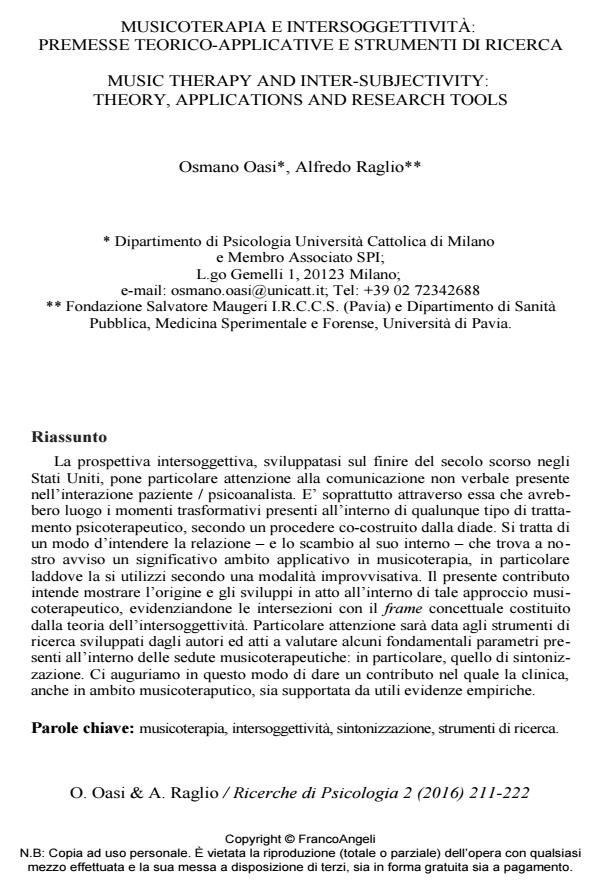Music therapy and inter-subjectivity: theory, applications and research tools
Journal title RICERCHE DI PSICOLOGIA
Author/s Osmano Oasi, Alfredo Raglio
Publishing Year 2016 Issue 2016/2
Language Italian Pages 12 P. 211-222 File size 195 KB
DOI 10.3280/RIP2016-002006
DOI is like a bar code for intellectual property: to have more infomation
click here
Below, you can see the article first page
If you want to buy this article in PDF format, you can do it, following the instructions to buy download credits

FrancoAngeli is member of Publishers International Linking Association, Inc (PILA), a not-for-profit association which run the CrossRef service enabling links to and from online scholarly content.
Music Therapy and Inter-subjectivity: theory, applications and research tools. The inter-subjective framework, developed towards the end of the 20th century in the U.S., focuses on the non-verbal communication aspects within the patient-psychoanalyst interaction. These aspects, mutually shaped by the patient-psychoanalyst dyad, allow change to happen within any kind of psychotherapy treatment. This specific focus on the patient-psychoanalyst relationship appears to be particularly suited to applications in the field of Music Therapy, especially when musical improvisation is chosen as the main approach. This contribution aims at highlighting both the origins and current developments of the Music Therapy within clinical practice, focusing on the intersections with the framework of inter-subjective theory. In particular, we will discuss research tools developed by the authors and aimed at evaluating some key parameters of Music Therapy sessions, and in particular that of attunement. The main aim is to provide a contribution in which clinical work, with a specific focus on Music Therapy, proves to be clinically grounded.
Keywords: Music therapy, inter-subjectivity, attunement, research tools.
Osmano Oasi, Alfredo Raglio, Musicoterapia e intersoggettivita: premesse teorico-applicative e strumenti di ricerca in "RICERCHE DI PSICOLOGIA " 2/2016, pp 211-222, DOI: 10.3280/RIP2016-002006